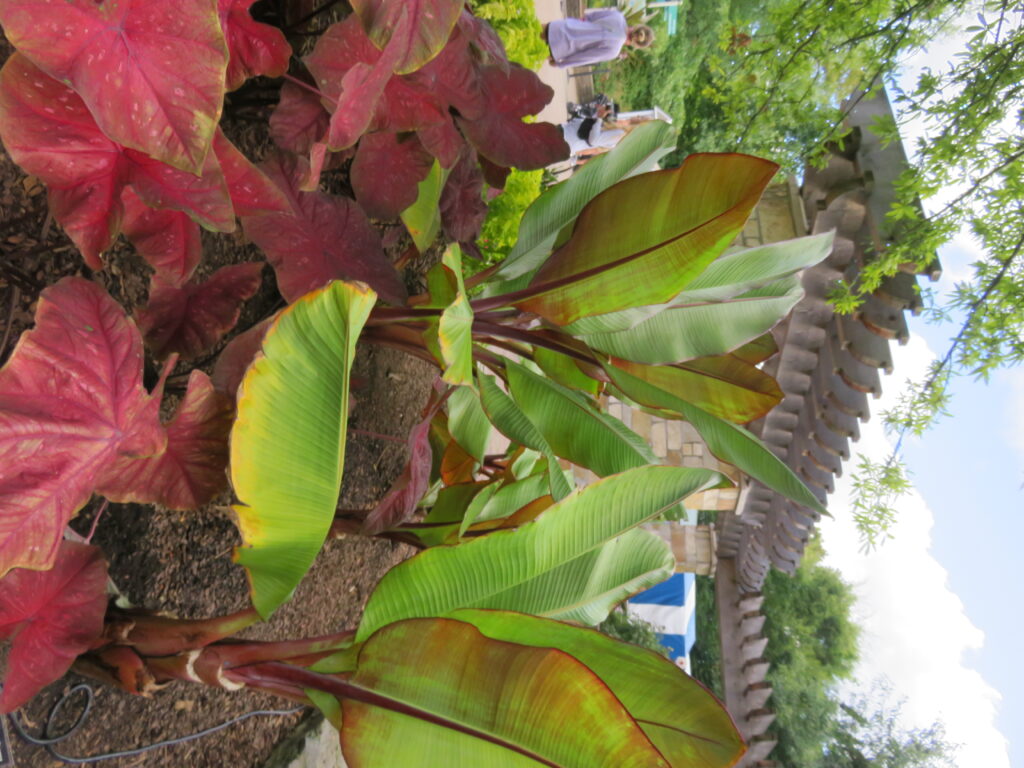Ensete ventricosum is not true banana (Musa spp ); it does not sucker like bananas, so does not form large clumps over time. In their native environment in tropical Asia and Africa, plants may grow to 30 or more feet in height, but grow considerably shorter in containers or in cultivation.
Abyssinian Red Banana (Ensete ventricosum ‘Maurelli’) is a tropical plant from East Africa that should spark up your landscape. (USDA hardiness zones 10-11). The cultivar ‘Maurelii’ flaunts huge attractive colorful leaves. Each leaf emerges with maroon-reddish hues and reddish leaf axils. With a maximum height between 7-10 feet, it is smaller in height than many Musa banana varieties.
Amend the soil if needed with 3 to 4 inches of compost or humus. Water generously over dry periods. Feed annually with a slow-release fertilizer like Osmocote™ or Nitricote™. An alternative nutrition program is monthly feeding with a water-soluble fertilizer like Miracle-Gro™ or Espoma™ during the spring and summer months.

Grow in full day sunlight in zones 5b thru 7 and partially shade in the afternoon in the deep South (zones 8-11). Sunlight is important for gorgeous leaf and petiole coloration. Plant performs best in a sandy, organic-rich, well-drained soil. Keep the plant well-mulched to conserve soil moisture. Bananas like lots of moisture. Trim leaves as needed to keep the plant attractive.
Move your Red Abyssinian Banana Tree indoors in fall if you live in a zone colder than Zone 8. Repot into fresh compost-rich potting media, trim back roots, and cut back leaves and petioles. Store in a cool spot around 40°F until spring.
Most likely, your Ensete or Musa plant was purchased from the garden center and originated from tissue culture. The plant is not likely to flower outdoors in zones 6 and 7, and the fruits are not edible.
Their flowers are absolutely incredible. They are very large, yellow-orange and indeed have a waxy feel. Grow with other tropicals like elephant ears (Colocasia and Alocasia), hibiscus, mandevillas, and allamandas.
Banana plants are vulnerable to pests including aphids, mealy bugs, scale and white flies. Avoid root rot issues with good pot and bed drainage.

 Posted in
Posted in 
